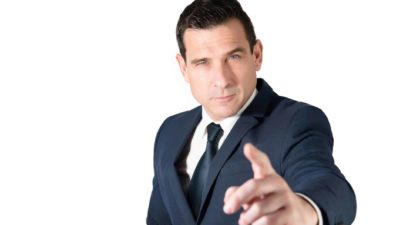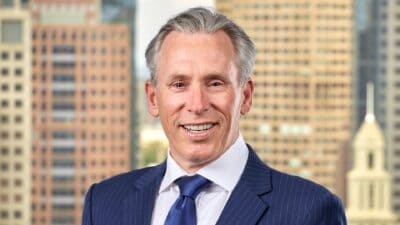Ask a Fund Manager
The Motley Fool chats with fund managers so that you can get an insight into how the professionals think. In part three of this edition, we're rejoined by Yarra Capital Management's fixed income specialists, Darren Langer, co-head of Australian fixed income, and Chris Rands, co-portfolio manager of the Yarra Australian Bond Fund. Today they discuss the threats and opportunities for bond investors in the year ahead.
The Motley Fool: We previously covered what a tough year it's been in the bond markets amid the aggressive interest rate hike signals from the US Fed and the RBA. Do you have any investment regrets over the past year?
Chris Rands: The biggest regret I have is that we bought the rising rates too early. If you think about that spread to cash I mentioned earlier, we didn't think the market would be pricing in a 4% cash rate by the end of this year. That seemed way too high for us. Once the market was pricing in a cash rate of 3%, we thought that was a good time to buy, and it turned out that was too early because the market doesn't think 3% is high enough anymore.
I still think the market is overpriced and that it's going to eventually come back.
Darren Langer: We're quite cynical about how central banks operate. Early on in the pandemic, we were talking about the fact that we don't trust central banks to tell you what they're really going to do. They tell you what they want you to hear. We thought they'd take a much slower path out of this. The sensible route is to go slower and not crush your economy on the way.
MF: So why are we seeing this hawkish tightening from the Fed and RBA?
DL: That last hit to energy prices with the Ukraine crisis has panicked central banks. And I think we underestimated just how much they would revert back to the 1990s thinking of having to kill inflation really quickly rather than looking at the underlying nature of what's going on.
Perhaps we weren't cynical enough and should have gone with our gut feeling that central banks would overreact to the situation rather than take a more nuanced view.
MF: Despite the difficult environment, what were some of your winning investment decisions?
CR: Coming into this year we didn't have much of a credit position. When spreads got really tight last year, we took the opportunity to sell the majority of our credit. What's been happening this year, as rates have sold off and central banks began to take excess liquidity out of the market, credit spreads have actually been widening. Corporate bonds have been having a relatively tough time.
So, we did well timing that credit spread. Hopefully, the next leg of this positive trade will be buying the attractive spread back at some stage.
MF: Has Russia's invasion of Ukraine changed your investment approach?
CR: It doesn't change any of our investment processes, but it does change how we think about inflation and those types of things. The way this turns up in investment strategies is [to] assess what impact we believe this conflict will have on inflation and, therefore, causes the RBA's reaction.
If we have a prolonged conflict, what does that do to oil prices and where does that put inflation? And, alternatively, if the conflict were to end, where does that put oil and what does that mean for the RBA's response?
This isn't something we've had to really worry about for the past 10 or so years. There are always minor geopolitical conflicts popping up, but not one of this magnitude and with such a large flow-on effect via the energy markets.
DL: One thing that's surprised us a little is we would have thought, in a world where there is conflict, Australia is a relatively safe haven for investors. We have a relatively stable economy and we're a long way from everybody else geographically.
But what we've actually seen is that Australian bonds as a spread to US bonds have been widening over the last six to 12 months. So, we've actually underperformed the US, in particular. That's been a surprise because we expect our rates to be a little lower than the US. We have a highly rated market relative to other countries. But there hasn't been the same demand for Australian bonds from international investors that we might have expected.
It doesn't affect us directly, because we only invest in the domestic market.
MF: What's the biggest threat for fixed-income investors in the year ahead?
CR: That the central banks continue on this hawkish path and march rates up to what the market is currently forecasting. If the RBA is able to get the cash rate to 4% over the next six to nine months, I don't think that's going to be a very good environment for other risk assets. And that's when you'll start to question whether the corporates can handle the slowdown in growth that's coming.
DL: If you think about the main risks in fixed income, higher interest rates are one, and credit risk is the other main one. For people investing in fixed-rate funds, higher rates are going to cause problems to returns.
There are floating rate funds in the market, but a lot of the floating rate funds also take credit risk. So if we keep pushing rates higher, the chances of recession become higher and that becomes a risk on the credit side.
MF: And what's the biggest opportunity in the fixed income space?
CR: I think the biggest opportunity is that central banks pull up earlier than the market expects. If the RBA were to stop at 2% to 2.5%, then fixed rates are too high. So there'd be a relief rally simply because you don't get to the levels that the market is forecasting relative to what the RBA actually does.
So the biggest opportunity is that we get a small slowdown in growth that causes central banks to re-evaluate what they're doing and pause the hikes. If it's a fast slowdown in growth, then it's a 'who knows what's going to happen' environment again.
DL: If we end up with a lower rate profile, fixed-rate funds will do quite well from their interest rate exposure. But also the credit spreads have widened quite a bit, so there have been lots of opportunities to invest in good quality corporates at reasonable spreads.
If we end up having a soft landing, the corporate market should do quite well.
**
If you missed the earlier installations of our interview with Yarra Capital's Darren Langer and Chris Rands, you can find part one here and part two here.
(You can find out more about the Yarra Australian Bond Fund here.)









